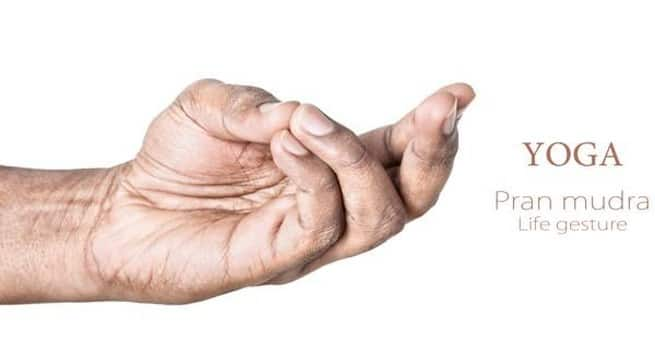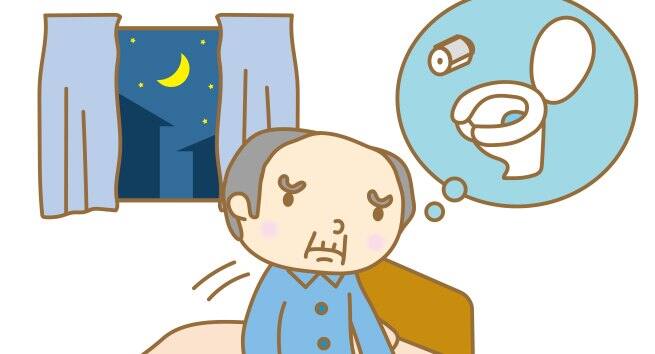5 warning signs that you are at a risk of a heart attack
5 factors that increase your risk of arthritis in future
Fatigue, acidity +3 health problems eating junk food can cause
Hormonal imbalances that could explain your fatigue
Expert-recommended diet tips to beat adrenal fatigue
Adrenal fatigue से निपटने के लिए ऐसी हो आपकी डायट
World Chronic Fatigue Syndrome Day 2017 - What happens when you suffer from Chronic Fatigue Syndrome
- Persistent musculoskeletal pain
- Headaches
- Anxiety
- Major depression
- Cognitive disorders
- Sleep disorders
- Extreme exhaustion after physical or mental exercise that lasts for more than 24 hours
- Tender lymph nodes in the neck and armpit
- And these are not all but the most frequent ones. Less frequent, but equally important, symptoms include –
- Brain fog or mental fog
- Orthostatic intolerance, that is, developing symptoms such as lightheadedness and dizziness, when standing which are relieved when reclining
- Mood problems
- Chills and night sweats
- Sensitivity to light, blurring, or pain in the eye
- Irritable bowel syndrome (IBS)
- Allergies to food, medicine, noise, odour, etc.
- Not the result of ongoing exertion
- Not lifelong
- Not responsive to rest
- Exhaustion and weakness
- Llack of energy
- Feeling drained
- Inability to stand for even a few minutes or walk even a few blocks without exhaustion
- Inability to sustain an activity for any significant length of time
- Too exhausted to change clothes more than every 7-10 days
- Exhaustion to the point that speaking is not possible
- Exertion of daily toileting, particularly bowel movements, sends me back to bed struggling for breath and feeling like I just climbed a mountain
- A “tired but wired” feeling
- Avellaneda Fernández A, Pérez Martín Á, Izquierdo Martínez M, et al. Chronic fatigue syndrome: aetiology, diagnosis and treatment. BMC Psychiatry. 2009;9(Suppl 1):S1. doi:10.1186/1471-244X-9-S1-S1.
- Committee on the Diagnostic Criteria for Myalgic Encephalomyelitis/Chronic Fatigue Syndrome; Board on the Health of Select Populations; Institute of Medicine. Beyond Myalgic Encephalomyelitis/Chronic Fatigue Syndrome: Redefining an Illness. Washington (DC): National Academies Press (US); 2015 Feb 10. 4, Review of the Evidence on Major ME/CFS Symptoms and Manifestations. Available from: http://https://www.ncbi.nlm.nih.gov/books/NBK284902/
- Valero S, Sáez-Francàs N, Calvo N, Alegre J, Casas M. The role of neuroticism, perfectionism and depression in chronic fatigue syndrome. A structural equation modeling approach. Comprehensive Psychiatry. Jun 2013, 54(7):1061-1067. doi: 10.1016/j.comppsych.2013.04.015
Chronic Fatigue Syndrome - what are the treatment options?
- Post exertional malaise or extreme exhaustion after physical or mental exercise that lasts for more than 24 hours
- Poor concentration and impaired short term memory
- Sleep disturbance
- Musculoskeletal pain
- Tender lymph nodes
- Headaches
- Sore throat
- Anxiety and depressive disorders
- Gradually build and resume regular daily activities
- Identify triggers and plan how to deal with them
- Learn how to manage and reduce the symptoms
- Improves the efficiency of the heart, lungs and circulation
- Helps the body to deal better with the demands of daily life
- Improves strength, endurance, flexibility, balance,ability to fight infections, sleep quality, concentration,well-being and mood, confidence, self-esteem and social activity
- Stabilize your routine
- Start doing regular stretches
- Decide on a goal and choose your exercise/ physical activity
- Set your exercise/ physical activity baseline
- Increase the duration of your exercise/ physical activity
- Increase the intensity of your exercise/ physical activity
- Decreased physical performance and aerobic capacity
- Increased musculoskeletal pain
- Increased neurocognitive impairment, exhaustion and weakness,
- A long-lasting recovery time
- May amplify pre-existing symptoms such as inflammation, immune dysfunction, andstress.
- It is important to come to terms with your illness. Even if you find the suitable treatment, the treatment period may be too long and you may start losing hope. However, keep trying, you never know, you may find you are improving and feeling really good at one point of time.
- Always remain positive about the prospect of recovery. Being pessimistic never helped anyone.
- Pace yourself. You will need to slow down so as not to exhaust yourself permanently. Take on little at a time and have a flexible approach to work or task.
- Develop a plan to limit overexertion and emotional stress. Relaxation therapies may help you with physical and mental well-being. Yoga, tai-chi, and meditation can be a beneficial adjunct to your therapy.
- Improve your sleep habits by going to bed and waking up at the same time each day. Avoid caffeine and alcohol to get a better quality of sleep.
- Reid S, Chalder T, Cleare A, Hotopf M, Wessely S. Chronic fatigue syndrome. BMJ Clinical Evidence. 2011;2011:1101.
- Vaishnav V. Chronic fatigue syndrome. Homeoint.org
- Wang T, Xu C, Pan K, Xiong H. Acupuncture and moxibustion for chronic fatigue syndrome in traditional Chinese medicine: a systematic review and meta-analysis. BMC Complementary and Alternative Medicine. 2017;17:163. doi:10.1186/s12906-017-1647-x.
- Price JR, Mitchell E, Tidy E, Hunot V. Cognitive behaviour therapy for chronic fatigue syndrome in adults. Cochrane Database of Systematic Reviews 2008, Issue 3. Art. No.: CD001027. DOI: 10.1002/14651858.CD001027.pub2.
- King's College London - CBT for chronic fatigue syndrome. Kclacuk.
- NHS. Graded Exercise Therapy. A self-help guideforthosewithchronicfatiguesyndrome/ myalgicencephalomyelitis.
- Twisk FN, Maes M. A review on cognitive behavorial therapy (CBT) and graded exercise therapy (GET) in myalgic encephalomyelitis (ME) / chronic fatigue syndrome (CFS): CBT/GET is not only ineffective and not evidence-based, but also potentially harmful for many patients with ME/CFS.Neuro Endocrinol Lett. 2009;30(3):284-99.
या ५ गोष्टींमुळे भविष्यात तरुणांनाही आर्थ्राटीसचा धोका वाढू शकतो.
Translated by Trupti Paradkar
छाया चित्र सौजन्य : Shutterstock
Study says elite endurance athletes are more resilient to mental fatigue
Elite endurance athletes have superior ability to resist mental fatigue, revealed a new study. For the study, the researchers compared the performance of 11 professional cyclists and nine recreational cyclists in various tests. The professional cyclists outperformed the recreational cyclists in a simulated time trial in the laboratory. The study suggested that while the recreational cyclists slowed down after performing a computerised cognitive task to induce mental fatigue, the professional cyclists’ time trial performance was not affected. In addition, the professional cyclists performed better than the recreational cyclists in the task which measures ‘inhibitory control’ or willpower. This is not surprising as the ability to suffer is a major factor in the sport of cycling, the study suggested. (Read: 6 supplements for athletes to enhance their performance)
‘The two effects go hand in hand, because becoming resistant to mental fatigue should bolster willpower during the latter stages of a competition such as the Tour de France,’ said Samuele Marcora, Professor, Kent’s School of Sport and Exercise Sciences in the study published in journal PLOS ONE. Although largely hereditary, the researchers speculate that superior willpower and resistance to mental fatigue may be trained through hard physical training and demanding the lifestyle of an elite endurance athlete. (Read: Young female athletes more likely to injure repaired knee ligament)
Source: IANS
Photo source: Getty images (Image for representational purpose only)
Exposure to natural gas can give you migraines and headaches
A new research says that Pennsylvania residents with the highest exposure to active natural gas wells operated by the hydraulic fracturing industry are nearly twice as likely to suffer from a combination of migraine headaches, chronic nasal and sinus symptoms and severe fatigue. Researchers from the Johns Hopkins Bloomberg School of Public Health said that their findings add to a growing body of evidence linking the fracking industry to health problems. ‘These three health conditions can have debilitating impacts on people’s lives,’ says first author Aaron W. Tustin. ‘In addition, they cost the health care system a lot of money. Our data suggest these symptoms are associated with proximity to the fracking industry,’ he added. For their study, Tustin and his colleagues created a questionnaire and received responses from 7,785 adult primary care patients of the Geisinger Health System, a health care provider that covers 40 counties in north and central Pennsylvania. The questionnaires were returned between April and October of 2014. The researchers found that 1,765 respondents (23 percent) suffered from migraines, 1,930 people (25 percent) experienced severe fatigue and 1,850 (24 percent) had current symptoms of chronic rhinosinusitis. (Read: Try this natural remedy to treat sinusitis at home!)
The researchers used publicly available well data to estimate participants’ exposure to the fracking industry. Their models accounted for the size and number of wells, as well as the distance between wells and people’s homes. While no single health condition was associated with proximity to active wells, those who met criteria for two or more of the health conditions were nearly twice as likely to live closer to more or larger wells. ‘We don’t know specifically why people in close proximity to these larger wells are more likely to be sick,’ says the study’s senior author Brian S. Schwartz. ‘We need to find a way to better understand the correlation and, hopefully, do something to protect the health of these people,’ he added. Previous research conducted by Schwartz and colleagues has linked the fracking industry to increases in premature births, asthma attacks and indoor radon concentrations. Tustin and his colleagues say there are plausible explanations for how fracking could cause these health conditions. Well development generates air pollution, which could provoke nasal and sinus symptoms. This type of drilling also produces stressors such as odors, noise, bright lights and heavy truck traffic. Any of these stressors could increase the risk of symptoms. Migraine headaches, for example, are known to be triggered by odors in some individuals. (Read: Suffering from migraine headaches? Inhale lavender oil fumes for quick relief)
Hydraulic fracturing involves the injection of millions of liters of water into deep rock formations to liberate natural gas or petroleum. Energy companies moved toward fracking in the early 2000s when natural gas prices were high and supplies were low. Pennsylvania has embraced the industry. Over 9,000 fracking wells have been drilled in Pennsylvania in the past decade. Hydraulic fracturing has expanded rapidly in recent years in states such as Colorado, North Dakota, Wyoming, West Virginia and Ohio. In contrast, New York has banned fracking and Maryland has delayed well production. Maryland’s fracking moratorium is set to expire in October 2017. The moratorium was passed in 2015 out of concern about fracking’s potentially negative environmental effects, before the more recent health studies were completed. Schwartz says Maryland regulators should consider these new scientific findings when they decide whether to allow drilling. ‘The moratorium was put in place before we even knew that there were health effects associated with these wells,’ Schwartz said, adding, ‘Now that we do, regulators need to carefully consider their next steps.’ The study has been published by Environmental Health Perspectives. Here’s how gem therapy can help relieve a migraine
Source: ANI
Photo source: Shutterstock (Image for representational purpose only)
6 yoga asanas to zap chronic fatigue
Menopause causes breathing problems and fatigue
Menopausal women are likely to experience an accelerated decline in lung function, leading to increase in shortness of breath, reduced work capacity and fatigue, a study says. The researchers found that menopause was more likely to cause restrictive, rather than obstructive, breathing problems. Obstructive breathing problems make it difficult to exhale air from the lungs while restrictive breathing problems make it difficult to fully expand the lungs upon inhaling. “Whether obstructive or restrictive, the decline in lung function may cause an increase in shortness of breath, reduced work capacity and fatigue,” said lead author Kai Triebner from University of Bergen in Norway.
“Symptoms depend upon how much lung capacity is reduced, and a few women may actually develop respiratory failure as a result of this decline,” Triebner said. For the study – published in the American Journal of Respiratory and Critical Care Medicine — the researchers analysed data from 1,438 women enrolled in the European Respiratory Health Survey. Participants in the study ranged in age from 25 to 48 at enrollment, and none was menopausal when the study began. They were followed for 20 years and during that time most went through the menopausal transition or became postmenopausal.
The authors said there were several possible explanations for their findings. Menopause brings hormonal changes that have been linked to systemic inflammation, which itself is associated with lung function decline. Hormonal changes are also implicated in osteoporosis, which shortens the height of the chest vertebrae and may, in turn, limit the amount of air a person can inhale. “Women, and their physicians, should be aware that respiratory health might decline considerably during and after the menopausal transition,” Triebner said.
Source: IANS
Image: Shutterstock
Woke up late? Do these 5 things to look more awake
Images: Shutterstock
5 best yoga poses to do if you are extremely fatigued at work
Image source: Getty Images. Shutterstock Images
Read this in Marathi
Chronic fatigue syndrome biomarkers found
US researchers have identified biomarkers associated with the severity of chronic fatigue syndrome (CFS), which may help lead to a diagnostic blood test. The findings showed evidence that inflammation is a driver of CFS, the underpinnings of which have eluded scientists for decades, Xinhua news agency reported. The CFS leads many patients to have flu-like symptoms common in inflammation-driven diseases, while other patients may have symptoms sometimes manifesting as heart problems, mental impairment, indigestion, diarrhoea, constipation, muscle pain, tender lymph nodes, said Jose Montoya, Professor of Infectious Diseases and lead author of the study.
More than one million people in the US suffer from the CFS, also known as myalgic encephalomyelitis. It was reported earlier in 2017 that in Norway, a nation with a population of over five million, about 270 primary and secondary students dropped school due to the syndrome. The disorder has no known cure or reliably effective treatments. For unknown reasons, the syndrome typically persists for decades, and likely hits among adolescents between the age of 15 and 20, and adults between 30 and 35. Three of every four patients are women. Antivirals, anti-inflammatories and immune-modulating drugs have led to symptomatic improvement in some cases. Read about how to cope with chronic fatigue syndrome.
However, no single pathogenic agent can be fingered, as the ultimate CFS trigger has yet been isolated, said Montoya. Analyzing blood samples from 192 patients and 392 healthy controls, the Stanford University researchers found levels of some immune-system signaling proteins or cytokines were lower in patients with mild CFS than in the control subjects, but were higher in patients with relatively severe CFS. The findings were published in the Proceedings of the National Academy of Sciences released on July 31.
The average age of the patients and controls was about 50, and the patients’ average duration of symptoms was more than 10 years. In addition, the researchers found that of the 51 cytokines they measured, the concentration of 17 cytokines tracked disease severity, 13 of which are pro-inflammatory. The authors of the study believe that their findings could improve the diagnosis and treatment of the disorder, including clinical trials to test the potential of immunomodulatory drugs as CFS therapies. Read more about Chronic Fatigue Syndrome – what are the treatment options?
Source: ANI
Image source: Shutterstock
Swine flu worst in Maharashtra and Gujarat; officials warn cases may increase
Maharashtra and Gujarat are the worst affected when it comes to the number of cases of swine flu reported in the past one month. Delhi recorded 1,066 cases of swine flu. Zee News states that the number of swine flu deaths according to official figures stands at 280 in Gujarat and the number of reported cases at 3,220 this week alone. Till August 13, Maharashtra has reported 409 deaths due to swine flu and 4,011 cases of infections. Public health officials have warned that with monsoon still underway in both the states, the figures of infections and deaths are likely to rise.
The H1N1 type A influenza or swine flu was originally transmitted from pigs to humans and now spreads from one human to another. The symptoms of swine flu are very similar to regular influenza and include fever, headaches, chills, diarrhoea, coughing and sneezing. One can prevent infection by maintaining basic hygiene and wearing a proper surgical mask during flu season. The number of cases shoots up during the summers and monsoon seasons. There are various vaccines available to combat the disease and antiviral treatments for prevention as well. One should however only use these medicines under a doctor’s supervision as indiscriminate use might result in susceptibility to the virus. Find out if you are at risk of swine flu.
Did you know that there are different types of swine flue – swine with mild symptoms, swine flu with moderate symptoms and swine flu with severe symptoms. The patients who belong to this category show mild symptoms of swine flu such as fever, cough, cold, body pain and fatigue. These type of patients do not have any co-morbid conditions such as asthma, diabetes, lung disease and old age. Those with moderate symptoms have comorbid conditions like COPD, lung disease and belong to high-risk groups. Those with severe swine flu suffer from respiratory problems such as acute respiratory distress syndrome (ARDS), acute liver injury, breathing problems due to a fall in the oxygen (O2) level in blood along with symptoms of swine flu. In this case, the patient has to undergo a strict medical treatment with compulsory medications.
Here are important precautions you must take to prevent swine flu.
Image source: Shutterstock
7 signs of heart failure that indicate you are in trouble
Image source: Shutterstock
5 signs of a silent heart attack you should be aware of!
Image source: Shutterstock
10 sad things only women with endometriosis will understand
The trouble with living with endometriosis is — apart from the pain and infertility — making people understand what you are going through. Endometriosis is a common gynaecological ailment but ironically, it is not quite well-known, at least in India. Which makes it very difficult for others to relate to you. Here are ten upsetting things only a woman suffering from endometriosis will understand.
1 People confuse your condition with period cramps
Women with endo do through debilitating pain in their lower abdomen but people mistake it for regular period cramps. Your employers wonder why you should be taking a day off when other women also go through the same ordeal every month. No! Endometriosis pain results from inflammation and is ten times worse than the cramps women of normal health experience every month. Here are some home remedies for period cramps. Here are some diet tips for endometriosis.
2 You can’t wear anything body-hugging
Women experiencing endometriosis often go through the “endo-belly” where the lower abdomen looks swollen, heavy and distended. It could be mistaken for a flabby stomach or a “pregnant” belly. The problem is a common symptom of endometriosis and often results from bloating or other digestive disorders caused by the condition. This causes serious body image issues among women with endo. Avoid these food combinations to stop bloating.
3 You are always tired
No matter how well-rested you are, you never seem to have the energy. You marvel at your friends managing their domestic and professional lives with equal ease and wonder why you can’t drag yourself out of bed every morning. Because another one of endometriosis’ associated conditions is chronic fatigue syndrome and fibromyalgia, both of which can cause low energy levels. These are some of the health risks of endometriosis.
4 There is no way to predict the pain
No two periods are the same when you have endometriosis. Some months may be easy going while others may be a nightmare. It is completely possible to be symptom-free for a month and then be ambushed by the pain in the next.
5 Pain is not limited to the abdomen
When you talk of period pain, you think of cramps in the abdomen. But in endometriosis, women experience pain, not only in their lower abdomen but in places such as the hands, legs and thighs.
6 You have to come to terms with your infertility
Infertility is one of the associated risks of endometriosis. Many women struggling with this condition have to accept the fact that they may never have a child of their own. Although some women do go on to conceive, for most women getting pregnant is an uphill task. Some of them have fall prey to depression at the thought of being childless for life.
7 You struggle with sadness
When you have endometriosis, your constant companions are anxiety and depression. You struggle with mood swings, constant sadness and anxiety. The pall of gloom settles on almost everything you do and almost nothing can help you out of it when you are in one of your depressed spells.
8 You could lose your uterus
When things become too much to handle, you may have to consider hysterectomy as an option. It is neither a solution nor should it be anybody’s last resort. But gynaecologists all over the world suggest uterus removal as an option for endometriosis pain. Here’s how your body will change after a hysterectomy.
9 Your relationship gets affected
Women suffering from endometriosis often have to see their romantic relationships crumble under the weight of their ailment. Endo makes things difficult for women first by lowering their sex drive and then by making intercourse painful. This causes discord between the couple, often leading to breakups and even divorce. Can your relationship survive these problems?
10 You fear for your life
Gynaecologists warn women suffering from endometriosis about their increased risk for other life-threatening diseases like ovarian, endometrial and breast cancer. Increased oestrogen levels in their body make them susceptible to these cancers. So they have to take their health very seriously, screening themselves for these diseases from time to time. No matter how healthy your lifestyle is, there is always the fear of cancer at the back of your mind when you suffer from endometriosis.
Image source: Shutterstock



































































